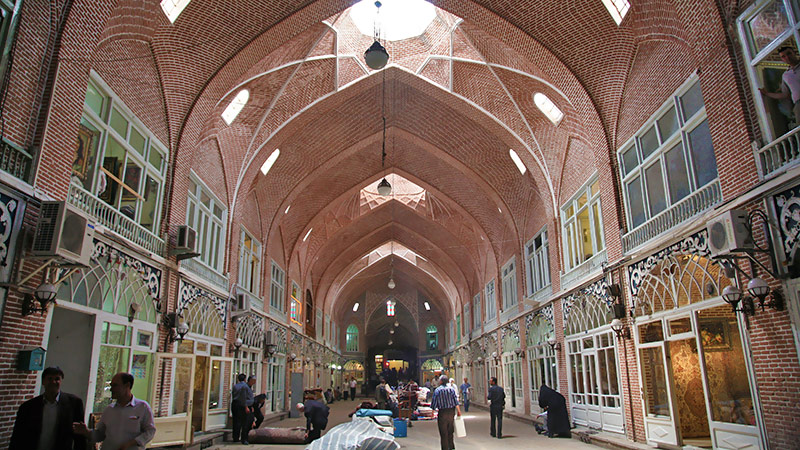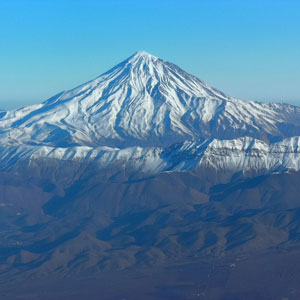 Signin with Google
Signin with Google Signin with Facebook
Signin with Facebook

 Places,Culture,History
Places,Culture,HistoryTabriz Bazaar, the Cultural and Commercial World Heritage

The world's first bazaar enlisted in the UNESCO world heritage list has the first rank among all enchanting bazaars in Iran. Tabriz city as the historic commercial centre on the Silk Road holds the traditional station of the unique living environment which merges people of different cultures, professions and architectural structures to be one of the most significant international cultural and trading centres in Asia over six hundred years of history.
Covered all over its seven square kilometres length with brick vaults, the one-thousand-year Tabriz grand bazaar is the perfect combination of history, heritage, and authenticity. One of the biggest bazaars in the Middle East, it's also the best embodiment of the Persian culture and Iranian daily life that is visible via the flames of the sun entering through apertures embedded on the roof of the bazaar all along.
A prototype for Persian urban design
This city of Northwestern Iran was an important economic hub since the 9th century. Located on the famous Silk Road trading route, thousands of caravans would stop daily on their way between Asia and Europe. Merchants would stop under the arches of the bazaar, to trade fabrics, leathers, coopers, and other goods coming halfway around the globe. The famous Venitian merchant Marco Polo is one of the many world travellers attracted by the radiant city of Tabriz. During spring 1272, he described it as "a great city surrounded by beautiful and pleasant gardens. It is excellently situated so the goods brought to here coming from many regions. Latin merchants especially from Geneva go there to buy the goods that come from foreign lands.”
However, its most glorious era was during the reign of the Safavid kings, who made Tabriz their capital since the 13th century. For 200 years, the city and its bazaar were the heart of the economic activities of Persia, and still, in the 19th century, the great historical bazaar would trade more goods than the capital, Tehran. It's thus an understatement to say that the place is full of life and radiates with energy.

Alive heritage of the old Silk Road in Iran
The alleys of this masterpiece of Persian architecture, where the smells of spices blend with the voices of merchants, look unchanged for centuries. This magnificent complex of well-designed vaults and domes is decorated with tilework and sculpted bricks. It's almost a city inside the city, with plenty of sub-bazaars, caravanserais, traditional bathhouses, schools, and many mosques. Tabriz Bazaar has all the components to bear its significance.
Walking into the lanes, the visitor can feel the same atmosphere as the one described by the Moroccan explorer Ibn Battuta in the 14th century, entering the lavish Amir Bazaar: “I traversed the bazaar of the jewellers, and my eyes were dazzled by the varieties of precious stones which I beheld."
No doubts Ibn Battuta had been amazed by the wonderful work of craftsmen in the Mozzafarieh section too, the highlight of Tabriz Bazaar, and a worldwide centre of carpets selling still remained as the favourite part of bazaar for tourists to be thrown back in time seeing carpet brokers at work while others are busy renovating loose rugs. At the giant gates of Mozaffarieh caravanserai, a big samovar offers bazaar keepers and clients to grab hot tea as a cultural routine in the daily life of the bazaar.
One must get lost in the mazelike heart of the bazaar to explore its hidden gems, which merchants themselves have never laid their eyes on. Other sections display shoes, clothes, hats, and food, intersperse by peaceful caravanserais.
"Nobody pushes to buy" and "People are genuinely friendly at Tabriz bazaar"; are what tourists largely state about Tabriz bazaar in their excursion experience. The experience of Tabriz bazaar is going to fulfil by having a traditional lunch in Haj Ali restaurant in the Kolahdoozan section of the bazaar.

A place of religious and political significance
Tabriz Bazaar is not only a historical place of commercial exchanges. Among its many mosques, the bazaar holds the splendid Jameh Mosque, an important religious monument. During the Shia commemoration of Ashura, this place lives the celebrations like no other. The whole bazaar is lavishly decorated for the event, while the beautiful mosque is the centre of the gathering. Dating back to the Seljuk Era, a powerful Turko-Persian Empire and the Jameh Mosque welcomes its visitors with two fierce minarets. The interior leaves them in awe, adding to the magic of the great bazaar, with the raw delicate bricks arches of its night prayer yard. Historically, Tabriz bazaar also had an important political role, thanks to the influence of its powerful merchants. During the Constitutional Revolution, at the beginning of the 20th century, the whole place was entirely shut down for several days.
Still flourishing today, the biggest Iranian bazaar stays an invaluable and living testimony of the Persian Empire's heritage and the greatness of Persian culture.

